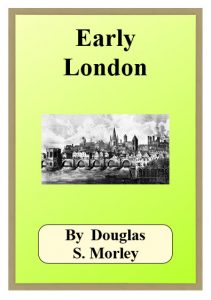1. Introduction
THE COMMENT IN THE TWENTY-NINTH CHAPTER OF THE BOOK OF ACTS in the Turkish Archives at Istanbul (formerly Constantinople), about the arrival of St. Paul in Britain at the Port of Raphinus and his preaching in their city upon “Mount Lud”, (Ref. 1 – p 141), is interesting as it takes one back to the foundation and early history of London.
Gordon (Ref. 2) and Waddell (Ref.3) both rely on Nennius and Geoffrey of Monmouth for their information. Gordon also uses information from the works of the Welsh scholar and bard, R. W. Morgan, and particularly refers to his “History of the Kymri”.(Ref. 2 – p 85 & 106).
2. Prehistoric London
Gordon (Ref. 2 – p 6) shows the plan of the prehistoric London mounds. Two of the mounds are artificially constructed. One was known as Bryn Gwyn, the white or holy mound, and the White Tower of London was built on this site. The other was Tot Hill meaning the sacred mound. Both of these mounds are close to the Thames.
Four miles north east of St. Paul’s Cathedral there is a hill which was known as “LIandin”, a sacred or lake eminence, known today as Parliament Hill standing 322 feet high.(Ref. 2 – p 7/8). On the north eastern slope of this hill is a stone monument on which it states public speaking is allowed. It appears that since “time immemorial ” this hill has been used for numerous meetings both religious and political, either on the hill or on “Parliament Fields ” at its base. (Ref. 2 – p 110).
